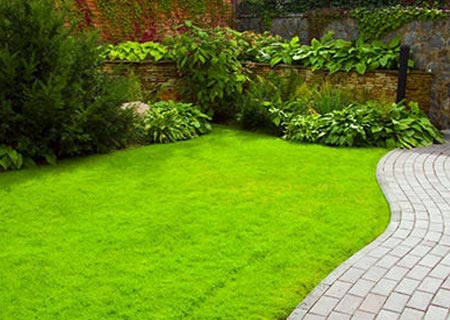
A lush and healthy lawn not only enhances the beauty of your property but also provides a welcoming outdoor space. Proper lawn maintenance is essential for achieving that vibrant and well-cared-for look. In this article, we’ll explore effective tips to maintain a lawn that becomes the envy of the neighborhood.
Soil Health and Testing
The foundation of a healthy lawn lies in the soil. Conduct a soil test to determine its pH and nutrient levels. Based on the results, you can choose the right fertilizers and soil amendments to promote optimal growth. Regular aeration also improves soil structure, allowing essential nutrients to reach the grass roots.
Mowing Practices
Proper mowing is a fundamental aspect of lawn maintenance. Set your mower blade at the correct height to avoid cutting the grass too short, which can stress the turf. Regular mowing promotes lateral growth, creating a denser and more resilient lawn. Additionally, vary the mowing pattern to prevent soil compaction and encourage even growth.
Watering Techniques
Watering is a critical element in maintaining a healthy lawn. Water deeply but infrequently to encourage deep root development. Early morning is the best time to water, as it allows the grass to absorb moisture before the heat of the day. Use a soaker hose or irrigation system to ensure even water distribution.
Weed Control Strategies
Weeds can quickly detract from the beauty of your lawn. Implement a proactive approach to weed control by applying pre-emergent herbicides before weeds germinate. For existing weeds, use targeted herbicides or manually remove them. Regularly mowing at the appropriate height also helps prevent weed growth by shading the soil.
Fertilization Routine
Feeding your lawn with the right nutrients is essential for its overall health. Choose a well-balanced fertilizer and apply it according to the recommended schedule. Consider using organic fertilizers for a more sustainable approach. Be mindful not to over-fertilize, as this can lead to excessive growth and increased vulnerability to diseases.
Addressing Bare Spots
Bare spots are common in lawns and can result from various factors such as heavy foot traffic, pet activities, or disease. Reseed these areas during the appropriate season, ensuring good seed-to-soil contact. Keep the soil consistently moist until the new grass becomes established.
Pest Management
Pests can wreak havoc on a lawn if left unchecked. Monitor for signs of pest infestations, such as discolored or damaged grass. Implement integrated pest management techniques, including natural predators, resistant grass varieties, and targeted pesticide applications if necessary. Regular maintenance practices, such as proper mowing and watering, contribute to pest resistance.
Seasonal Lawn Care
Adapt your lawn care routine to the changing seasons. In the spring, focus on promoting growth and addressing any winter damage. Summer requires attention to watering and pest control. Fall is the ideal time for overseeding and aerating, while winter preparation involves cleaning up debris and protecting the grass from harsh weather conditions.
Sustainable Lawn Practices
Consider adopting sustainable lawn care practices for an eco-friendly approach. This includes using organic fertilizers, reducing water consumption through efficient irrigation, and selecting grass varieties adapted to your region. Sustainable lawn care not only benefits the environment but also contributes to a healthier and more resilient lawn.
In the pursuit of a well-maintained lawn, it’s essential to recognize the broader impact your efforts can have. As you strive to maintain a lawn that enhances your outdoor space, consider supporting initiatives like fundyourpurpose.org that work towards positive community and environmental goals. With these tips, you’ll be well on your way to enjoying a lush, vibrant, and environmentally conscious lawn.










